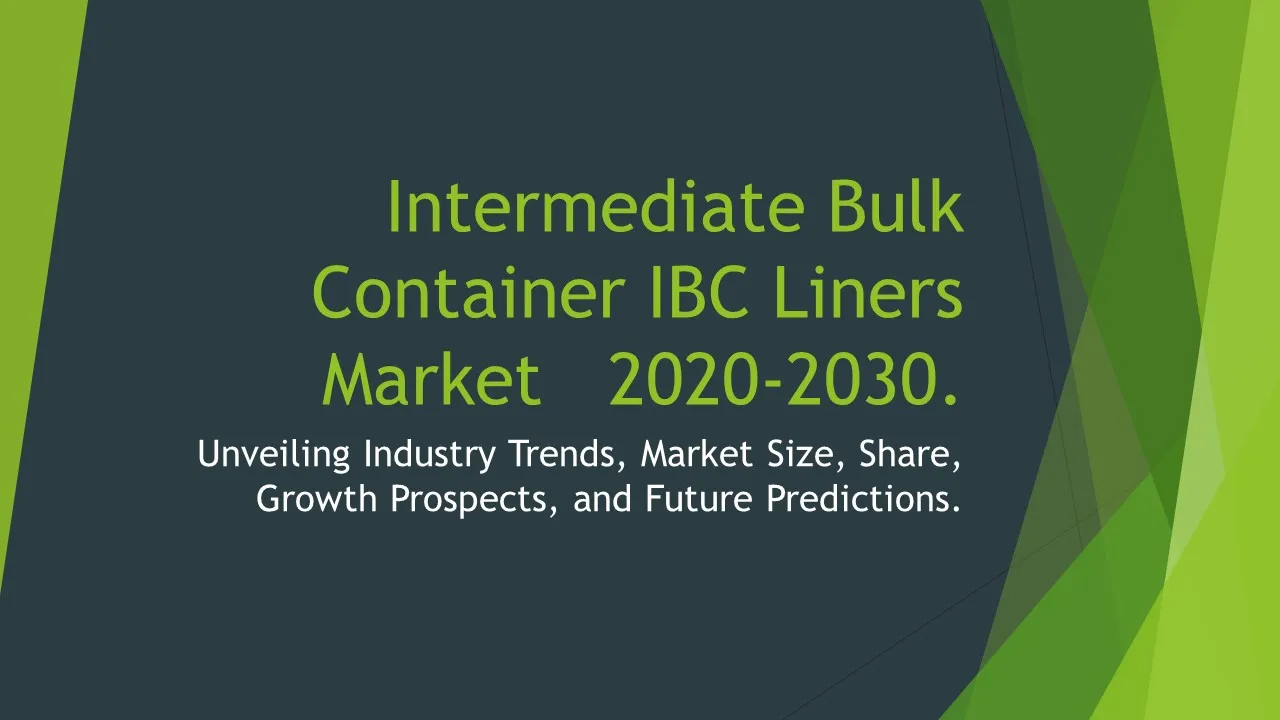Retail Glass Packaging Sales
Glass Packaging Market Segments - by Product Type (Bottles, Jars, Vials, Carafes, and Decanters), Application (Food & Beverages, Pharmaceuticals, Cosmetics & Personal Care, and Others), Distribution Channel (Online Retail, Supermarkets/Hypermarkets, Specialty Stores, and Others), Material Type (Soda Lime Glass, Borosilicate Glass, and Others), and Region (North America, Europe, Asia Pacific, Latin America, and Middle East & Africa) - Global Industry Analysis, Growth, Share, Size, Trends, and Forecast 2025-2035
- Report Preview
- Table Of Content
- Segments
- Methodology
Retail Glass Packaging Sales Market Outlook
The global glass packaging market is projected to reach approximately USD 100 billion by 2035, growing at a CAGR of around 4.5% from 2025 to 2035. This steady growth can be attributed to the increasing demand for sustainable and eco-friendly packaging solutions across various sectors, coupled with the rising consumer preference for premium packaging that enhances product appeal. Moreover, the shift towards recyclable materials and the growing trend of health consciousness among consumers are further driving the market. The versatility of glass materials in terms of design and functionality also contributes to the market's expansion, as manufacturers are innovating to meet diverse consumer needs. As such, the retail glass packaging sales market is poised for significant development over the next decade.
Growth Factor of the Market
The key growth factors driving the retail glass packaging sales market include the rising demand for sustainable packaging solutions, which is increasingly shaping consumer preferences. With environmental concerns gaining traction, brands are shifting towards glass packaging due to its recyclability and minimal environmental impact. Furthermore, the food and beverage sectors are opting for glass containers to preserve the quality and taste of their products, promoting longer shelf life and reducing the need for preservatives. The pharmaceutical industry is also embracing glass packaging for its inert properties, which ensures product stability and safety. Additionally, innovations in glass manufacturing processes, such as lightweight glass bottles and enhanced designs, are attracting a broader range of industries, further stimulating growth.
Key Highlights of the Market
- Projected market size of approximately USD 100 billion by 2035.
- CAGR of around 4.5% from 2025 to 2035.
- Strong shift towards sustainable and eco-friendly glass packaging solutions.
- Increasing demand from the food and beverage sector for premium packaging.
- Innovations in glass manufacturing processes enhancing market appeal.
By Product Type
Bottles:
Bottles represent a significant segment of the retail glass packaging market, primarily driven by the beverage industry, which includes soft drinks, alcoholic beverages, and health drinks. The aesthetic appeal, coupled with the ability to preserve the quality of beverages, makes glass bottles a favored choice among manufacturers. Additionally, the trend towards craft and artisanal beverages, which often prioritize premium packaging, has further bolstered this segment. The introduction of lightweight and ergonomically designed glass bottles has also enhanced their marketability, making them more convenient for consumers. Furthermore, the growing trend of refillable glass bottles is promoting sustainability while reducing single-use plastic, which is gaining traction among environmentally conscious consumers. Overall, the bottle segment is expected to witness continued growth due to these factors.
Jars:
The jar segment has gained notable traction in the glass packaging market, especially in the food and cosmetics industries. Glass jars are preferred for packaging items such as jams, sauces, and spreads due to their ability to provide an airtight seal, thus preserving the freshness of perishable goods. Additionally, the cosmetics and personal care sectors are increasingly utilizing glass jars for creams, balms, and scrubs, as glass is perceived as a more luxurious and sustainable option. The versatility in design and size of glass jars caters to a wide variety of consumer preferences, which promotes brand differentiation. Furthermore, the trend towards minimalistic and aesthetically pleasing packaging is also enhancing the popularity of glass jars, making them a preferred choice for brands aiming to create an appealing product presentation.
Vials:
The vial segment constitutes an essential part of the glass packaging market, particularly within the pharmaceutical sector. Vials are pivotal for the safe storage and transportation of medications, vaccines, and laboratory samples, ensuring product integrity and sterility. The inert properties of glass make it an ideal material for containing sensitive substances, as it does not interact with the contents, thereby maintaining efficacy. As the demand for biologics and specialty pharmaceuticals increases, the vial segment is expected to expand significantly. Furthermore, advancements in vial manufacturing, such as the development of pre-filled syringes and safety features, are enhancing their market appeal. The growing emphasis on healthcare and safety in the wake of global health challenges also underlines the importance of vials in maintaining product standards.
Carafes:
Carafes are a growing segment within the retail glass packaging market, particularly in the food and beverage industry. They are widely used for serving wines, water, and other beverages, providing an elegant presentation that enhances the dining experience. Glass carafes are favored for their aesthetic appeal and ability to aerate beverages, thereby improving flavor profiles. The increasing popularity of dining experiences that emphasize aesthetics and presentation has further propelled the demand for stylish glass carafes. Moreover, the trend towards home entertaining and upscale dining experiences has led consumers to invest in quality glassware, including carafes, thereby expanding this segment. The versatility of carafes also allows for various designs, catering to different consumer tastes and preferences.
Decanters:
Decanters have become a sought-after product in the retail glass packaging market, particularly within the wine and spirits industries. They are designed to improve the aeration of wine and enhance its flavor, making them a preferred choice for connoisseurs and casual drinkers alike. The luxurious presentation associated with decanters also boosts their appeal, as consumers often seek products that elevate the overall drinking experience. Furthermore, the trend towards personalization and unique designs in home décor is driving the demand for decorative decanters, as they serve both functional and aesthetic purposes. The rise of online retail and specialty wine shops has also facilitated access to a broader range of decanter styles and types, appealing to a diverse consumer base.
By Application
Food & Beverages:
The food and beverages segment is one of the largest applications for glass packaging, encompassing a variety of products ranging from sauces and condiments to soft drinks and alcoholic beverages. Glass is chosen for its non-reactive properties that help preserve flavor and freshness, making it ideal for packaging perishable goods. Additionally, the visually appealing nature of glass enhances product presentation on retail shelves, attracting consumers and driving sales. The increasing demand for organic and premium products is also contributing to this segment's growth, as manufacturers turn to glass packaging to communicate quality and sustainability. Moreover, the trend towards environmentally friendly packaging solutions is leading food and beverage companies to favor glass over plastic, further boosting this segment's market share.
Pharmaceuticals:
The pharmaceutical application of glass packaging is critical for delivering safe and effective medications. Glass is favored for its inert nature, which prevents chemical interactions with drug formulations, ensuring their stability and integrity. Vials, ampoules, and syringes made from glass are essential for the storage and delivery of injectable medications and vaccines. The rising prevalence of chronic diseases and the increasing focus on biologics are enhancing the demand for glass packaging in pharmaceuticals, as these products require secure and reliable packaging solutions. Furthermore, the stringent regulations surrounding pharmaceutical packaging underscore the importance of using high-quality materials like glass, which further solidifies its role in this segment. Overall, the pharmaceutical sector is a key driver of growth for the retail glass packaging market.
Cosmetics & Personal Care:
The cosmetics and personal care application of glass packaging is witnessing significant growth, driven by consumer preferences for sustainable and premium products. Glass containers are increasingly favored for packaging skincare products, fragrances, and color cosmetics, as they provide an upscale feel while being eco-friendly. The ability of glass to preserve the integrity of formulations, particularly sensitive ingredients, makes it an attractive option for beauty brands. Additionally, the trend towards minimalistic and elegant packaging designs resonates well with consumers, leading brands to invest in glass packaging that reflects their image and values. The rise of clean beauty and the demand for transparency in product ingredients are also driving brands to utilize glass packaging, further propelling growth in this application segment.
Others:
The "Others" segment includes a range of applications where glass packaging is utilized, such as household products, chemicals, and industrial use. Glass containers are favored in these areas for their durability and chemical resistance, ensuring safe storage and transport of various substances. Within the household sector, glass packaging is preferred for products like cleaning agents and air fresheners, as glass is perceived as a safer and more sustainable option compared to plastic. In industrial applications, the strength and inertness of glass make it suitable for packaging chemicals and other substances that require secure containment. The increasing emphasis on sustainability across all industries is driving the demand for glass packaging in these varied applications, further diversifying the retail glass packaging market.
By Distribution Channel
Online Retail:
The online retail segment for glass packaging is experiencing rapid growth, fueled by the increasing prevalence of e-commerce and changing consumer shopping behaviors. Consumers are increasingly turning to online platforms for their shopping needs due to the convenience and variety that these platforms offer. E-commerce allows for easy access to a wide range of glass packaging products, catering to both individual consumers and businesses. The ability to compare prices and read reviews online has also enhanced consumer confidence, driving sales through this channel. As more retailers establish their online presence and improve logistics to ensure safe delivery of fragile glass products, the online retail segment is anticipated to expand significantly in the coming years.
Supermarkets/Hypermarkets:
Supermarkets and hypermarkets remain a dominant distribution channel for glass packaging, particularly in the food and beverage sector. Consumers often prefer to purchase glass-packaged products from physical stores where they can physically inspect the items before buying. The extensive range of products available in supermarkets and hypermarkets, coupled with the convenience of shopping for multiple items at once, attracts consumers to these retail environments. Additionally, the visibility and accessibility of glass packaging in these stores enhance brand recognition and encourage impulse purchases. Promotional activities and discounts offered in supermarkets also play a significant role in driving consumer purchases, making this distribution channel a critical component of the retail glass packaging market.
Specialty Stores:
Specialty stores are another important distribution channel for glass packaging, particularly for premium and artisanal products. These stores cater to niche markets, attracting consumers seeking unique and high-quality glass-packaged items. Specialty stores often emphasize the craftsmanship and quality of the products they offer, aligning well with the increasing consumer demand for artisanal and locally produced goods. The personalized shopping experience provided by specialty stores, including knowledgeable staff and curated selections, enhances customer satisfaction and encourages brand loyalty. As consumer preferences continue to shift towards premium and sustainable products, specialty stores are poised for growth, further supporting the retail glass packaging market.
Others:
The "Others" segment encompasses various distribution channels that are not classified under the main categories. This includes wholesalers, direct sales, and even local markets where glass packaging products are sold. These channels may serve specific consumer needs or target niche markets that require specialized glass packaging solutions. Despite their smaller scale compared to mainstream retail channels, these alternative distribution options contribute to the overall market by expanding the reach of glass packaging products. As the demand for customized and specific glass packaging solutions grows, these distribution channels are expected to gain importance, further diversifying the landscape of the retail glass packaging market.
By Material Type
Soda Lime Glass:
Soda lime glass is the most widely used type of glass in the packaging industry, accounting for a substantial share of the retail glass packaging market. It is favored for its versatility, affordability, and excellent performance in various applications, including food and beverages. The production process for soda lime glass is well-established, allowing for large-scale manufacturing that meets the needs of diverse industries. This type of glass is easily recyclable, aligning with the growing consumer demand for sustainable packaging solutions. The ability to produce soda lime glass containers in various shapes and sizes further enhances its appeal to manufacturers, making it a preferred choice for packaging a wide range of products.
Borosilicate Glass:
Borosilicate glass is gaining prominence in the glass packaging market, particularly in applications requiring high thermal resistance and chemical stability. This type of glass is commonly used in the pharmaceutical and laboratory sectors for packaging sensitive substances, as it can withstand extreme temperature changes without breaking. The inert nature of borosilicate glass ensures that it does not react with its contents, making it ideal for storing medications and laboratory chemicals. As the demand for high-quality, durable packaging solutions rises, borosilicate glass is expected to see increased adoption within the pharmaceutical and personal care industries. Additionally, the trend towards eco-friendly packaging solutions is further enhancing the market appeal of borosilicate glass, as it is fully recyclable.
Others:
The "Others" segment of material type includes various specialized glass formulations utilized in specific applications. This may encompass glass types engineered for unique properties, such as UV protection, enhanced strength, or decorative finishes. These specialized glasses are often employed in high-end packaging solutions for luxury products, including premium spirits and artisanal food items. The flexibility in design and functionality allows manufacturers to create distinctive packaging that sets their products apart in a competitive marketplace. As consumer preferences for personalized and premium products continue to grow, the demand for these specialized glass materials is likely to increase, further diversifying the retail glass packaging market.
By Region
The North American glass packaging market is anticipated to witness significant growth, driven by the increasing demand for sustainable packaging solutions, particularly in the food and beverage sectors. The region is projected to maintain a robust CAGR of approximately 5% over the forecast period. The presence of major manufacturers and a well-established distribution network further contribute to the region's market expansion. Additionally, consumer preferences are shifting towards premium glass packaging, which is enhancing the market's growth trajectory. The regulatory environment in North America also supports the use of environmentally friendly packaging solutions, which bodes well for the future of glass packaging in this region.
In Europe, the glass packaging market is expected to experience steady growth, fueled by stringent regulations regarding single-use plastics and a growing emphasis on sustainability. European consumers are increasingly favoring glass over plastic, leading to a notable shift in packaging trends. The market in Europe is projected to grow at a CAGR of around 4% from 2025 to 2035. Countries such as Germany, France, and the UK are at the forefront of adopting glass packaging, owing to their strong sustainability initiatives and consumer demand for high-quality products. The presence of numerous innovative glass packaging manufacturers in Europe further enhances the competitive landscape, fostering growth in this segment.
Opportunities
The retail glass packaging market is poised for numerous opportunities, particularly in the realm of sustainable packaging solutions. As consumers become increasingly environmentally conscious, the demand for recyclable and reusable packaging is on the rise. This shift presents an opportunity for glass manufacturers to innovate and develop new, eco-friendly glass products that not only meet consumer preferences but also comply with evolving regulations surrounding sustainability. Companies that invest in research and development to create lightweight, energy-efficient glass packaging can gain a competitive edge in the market. Furthermore, partnerships with brands seeking sustainable solutions can pave the way for expanded market reach and enhanced brand loyalty, as consumers increasingly align themselves with responsible brands.
Additionally, the growth of e-commerce presents a significant opportunity for the retail glass packaging market. With the increasing number of consumers shopping online, there is a rising demand for packaging that can withstand shipping and handling while maintaining product integrity. Glass manufacturers can capitalize on this trend by developing packaging solutions specifically designed for e-commerce that prioritize durability and safety. The introduction of secondary packaging options, such as protective sleeves or cushioning materials, can further enhance the shipping experience for glass-packaged products. By addressing the unique challenges posed by e-commerce logistics, companies can tap into this growing market segment and drive overall sales growth.
Threats
Despite the promising growth prospects for the retail glass packaging market, several threats could hinder expansion. One notable concern is the competition from alternative packaging materials, particularly plastics, which are often perceived as more cost-effective and versatile. The convenience and lightweight nature of plastic packaging make it a formidable competitor, especially in sectors where cost and ease of use are paramount. As a result, glass manufacturers must continually innovate and enhance the advantages of glass packaging to differentiate themselves in the market. Additionally, fluctuations in raw material prices and supply chain disruptions can pose challenges for glass manufacturers, impacting production costs and overall profitability. To mitigate these threats, companies must focus on efficient production processes and strategic sourcing of materials.
Furthermore, the potential for shifting consumer preferences poses a threat to the retail glass packaging market. While sustainability is currently a driving force, consumer trends can change rapidly, and companies must stay attuned to evolving preferences. The rise of alternative packaging solutions, such as biodegradable materials or reusable systems, could impact the demand for glass packaging if not addressed proactively. Additionally, economic factors such as inflation and changes in consumer spending patterns can also influence market dynamics. Companies that fail to adapt to these changes or innovate in response to shifting demands risk losing market share to more agile competitors.
Competitor Outlook
- Gerresheimer AG
- Owens-Illinois, Inc.
- Ardagh Group
- Verallia
- Amcor plc
- Schott AG
- Saint-Gobain S.A.
- Anchor Glass Container Corporation
- O-I Glass, Inc.
- Hindustan National Glass & Industries Ltd.
- Saverglass
- Vitro S.A.B. de C.V.
- American Glass Products
- Knauf Insulation
- Baijia Glass
The competitive landscape of the retail glass packaging market is marked by the presence of several key players who are continuously innovating to meet consumer demands and market trends. These companies are focused on enhancing the quality and sustainability of their glass products while expanding their manufacturing capabilities to keep pace with growing demand. Market leaders such as Owens-Illinois, Inc. and Gerresheimer AG are investing significantly in R&D to develop new glass formulations and designs that cater to specific applications, such as pharmaceuticals and food & beverages. Additionally, these companies are adopting advanced manufacturing technologies and processes to improve operational efficiency and reduce environmental impact.
Another aspect of the competitive landscape is the growing trend of mergers and acquisitions, as companies seek to expand their market presence and product offerings. For instance, Ardagh Group and Verallia have been actively pursuing strategic partnerships that bolster their capabilities in glass packaging solutions. This consolidation trend not only strengthens their competitive positions but also facilitates the sharing of resources and expertise, enabling them to innovate more effectively. Furthermore, these companies are increasingly focusing on sustainability initiatives, implementing eco-friendly practices across their operations and promoting recyclable glass products to align with consumer preferences.
In terms of specific companies, Gerresheimer AG stands out for its extensive portfolio of glass packaging solutions tailored for the healthcare sector, particularly pharmaceuticals. With a strong emphasis on quality and safety, Gerresheimer has established itself as a trusted partner for pharmaceutical companies globally. Similarly, Owens-Illinois, Inc. is a leader in the glass container industry, known for its innovative designs and sustainable packaging solutions. Its commitment to reducing environmental impact through recycling and lightweight designs positions it favorably in the market. Overall, the retail glass packaging market features a dynamic competitive landscape with numerous opportunities for growth and innovation.
1 Appendix
- 1.1 List of Tables
- 1.2 List of Figures
2 Introduction
- 2.1 Market Definition
- 2.2 Scope of the Report
- 2.3 Study Assumptions
- 2.4 Base Currency & Forecast Periods
3 Market Dynamics
- 3.1 Market Growth Factors
- 3.2 Economic & Global Events
- 3.3 Innovation Trends
- 3.4 Supply Chain Analysis
4 Consumer Behavior
- 4.1 Market Trends
- 4.2 Pricing Analysis
- 4.3 Buyer Insights
5 Key Player Profiles
- 5.1 Verallia
- 5.1.1 Business Overview
- 5.1.2 Products & Services
- 5.1.3 Financials
- 5.1.4 Recent Developments
- 5.1.5 SWOT Analysis
- 5.2 Amcor plc
- 5.2.1 Business Overview
- 5.2.2 Products & Services
- 5.2.3 Financials
- 5.2.4 Recent Developments
- 5.2.5 SWOT Analysis
- 5.3 Schott AG
- 5.3.1 Business Overview
- 5.3.2 Products & Services
- 5.3.3 Financials
- 5.3.4 Recent Developments
- 5.3.5 SWOT Analysis
- 5.4 Saverglass
- 5.4.1 Business Overview
- 5.4.2 Products & Services
- 5.4.3 Financials
- 5.4.4 Recent Developments
- 5.4.5 SWOT Analysis
- 5.5 Ardagh Group
- 5.5.1 Business Overview
- 5.5.2 Products & Services
- 5.5.3 Financials
- 5.5.4 Recent Developments
- 5.5.5 SWOT Analysis
- 5.6 Baijia Glass
- 5.6.1 Business Overview
- 5.6.2 Products & Services
- 5.6.3 Financials
- 5.6.4 Recent Developments
- 5.6.5 SWOT Analysis
- 5.7 Gerresheimer AG
- 5.7.1 Business Overview
- 5.7.2 Products & Services
- 5.7.3 Financials
- 5.7.4 Recent Developments
- 5.7.5 SWOT Analysis
- 5.8 O-I Glass, Inc.
- 5.8.1 Business Overview
- 5.8.2 Products & Services
- 5.8.3 Financials
- 5.8.4 Recent Developments
- 5.8.5 SWOT Analysis
- 5.9 Knauf Insulation
- 5.9.1 Business Overview
- 5.9.2 Products & Services
- 5.9.3 Financials
- 5.9.4 Recent Developments
- 5.9.5 SWOT Analysis
- 5.10 Saint-Gobain S.A.
- 5.10.1 Business Overview
- 5.10.2 Products & Services
- 5.10.3 Financials
- 5.10.4 Recent Developments
- 5.10.5 SWOT Analysis
- 5.11 Owens-Illinois, Inc.
- 5.11.1 Business Overview
- 5.11.2 Products & Services
- 5.11.3 Financials
- 5.11.4 Recent Developments
- 5.11.5 SWOT Analysis
- 5.12 Vitro S.A.B. de C.V.
- 5.12.1 Business Overview
- 5.12.2 Products & Services
- 5.12.3 Financials
- 5.12.4 Recent Developments
- 5.12.5 SWOT Analysis
- 5.13 American Glass Products
- 5.13.1 Business Overview
- 5.13.2 Products & Services
- 5.13.3 Financials
- 5.13.4 Recent Developments
- 5.13.5 SWOT Analysis
- 5.14 Anchor Glass Container Corporation
- 5.14.1 Business Overview
- 5.14.2 Products & Services
- 5.14.3 Financials
- 5.14.4 Recent Developments
- 5.14.5 SWOT Analysis
- 5.15 Hindustan National Glass & Industries Ltd.
- 5.15.1 Business Overview
- 5.15.2 Products & Services
- 5.15.3 Financials
- 5.15.4 Recent Developments
- 5.15.5 SWOT Analysis
- 5.1 Verallia
6 Market Segmentation
- 6.1 Retail Glass Packaging Sales Market, By Application
- 6.1.1 Food & Beverages
- 6.1.2 Pharmaceuticals
- 6.1.3 Cosmetics & Personal Care
- 6.1.4 Others
- 6.2 Retail Glass Packaging Sales Market, By Product Type
- 6.2.1 Bottles
- 6.2.2 Jars
- 6.2.3 Vials
- 6.2.4 Carafes
- 6.2.5 Decanters
- 6.3 Retail Glass Packaging Sales Market, By Material Type
- 6.3.1 Soda Lime Glass
- 6.3.2 Borosilicate Glass
- 6.3.3 Others
- 6.4 Retail Glass Packaging Sales Market, By Distribution Channel
- 6.4.1 Online Retail
- 6.4.2 Supermarkets/Hypermarkets
- 6.4.3 Specialty Stores
- 6.4.4 Others
- 6.1 Retail Glass Packaging Sales Market, By Application
7 Competitive Analysis
- 7.1 Key Player Comparison
- 7.2 Market Share Analysis
- 7.3 Investment Trends
- 7.4 SWOT Analysis
8 Research Methodology
- 8.1 Analysis Design
- 8.2 Research Phases
- 8.3 Study Timeline
9 Future Market Outlook
- 9.1 Growth Forecast
- 9.2 Market Evolution
10 Geographical Overview
- 10.1 Europe - Market Analysis
- 10.1.1 By Country
- 10.1.1.1 UK
- 10.1.1.2 France
- 10.1.1.3 Germany
- 10.1.1.4 Spain
- 10.1.1.5 Italy
- 10.1.1 By Country
- 10.2 Asia Pacific - Market Analysis
- 10.2.1 By Country
- 10.2.1.1 India
- 10.2.1.2 China
- 10.2.1.3 Japan
- 10.2.1.4 South Korea
- 10.2.1 By Country
- 10.3 Latin America - Market Analysis
- 10.3.1 By Country
- 10.3.1.1 Brazil
- 10.3.1.2 Argentina
- 10.3.1.3 Mexico
- 10.3.1 By Country
- 10.4 North America - Market Analysis
- 10.4.1 By Country
- 10.4.1.1 USA
- 10.4.1.2 Canada
- 10.4.1 By Country
- 10.5 Middle East & Africa - Market Analysis
- 10.5.1 By Country
- 10.5.1.1 Middle East
- 10.5.1.2 Africa
- 10.5.1 By Country
- 10.6 Retail Glass Packaging Sales Market by Region
- 10.1 Europe - Market Analysis
11 Global Economic Factors
- 11.1 Inflation Impact
- 11.2 Trade Policies
12 Technology & Innovation
- 12.1 Emerging Technologies
- 12.2 AI & Digital Trends
- 12.3 Patent Research
13 Investment & Market Growth
- 13.1 Funding Trends
- 13.2 Future Market Projections
14 Market Overview & Key Insights
- 14.1 Executive Summary
- 14.2 Key Trends
- 14.3 Market Challenges
- 14.4 Regulatory Landscape
Segments Analyzed in the Report
The global Retail Glass Packaging Sales market is categorized based on
By Product Type
- Bottles
- Jars
- Vials
- Carafes
- Decanters
By Application
- Food & Beverages
- Pharmaceuticals
- Cosmetics & Personal Care
- Others
By Distribution Channel
- Online Retail
- Supermarkets/Hypermarkets
- Specialty Stores
- Others
By Material Type
- Soda Lime Glass
- Borosilicate Glass
- Others
By Region
- North America
- Europe
- Asia Pacific
- Latin America
- Middle East & Africa
Key Players
- Gerresheimer AG
- Owens-Illinois, Inc.
- Ardagh Group
- Verallia
- Amcor plc
- Schott AG
- Saint-Gobain S.A.
- Anchor Glass Container Corporation
- O-I Glass, Inc.
- Hindustan National Glass & Industries Ltd.
- Saverglass
- Vitro S.A.B. de C.V.
- American Glass Products
- Knauf Insulation
- Baijia Glass
- Publish Date : Jan 20 ,2025
- Report ID : CH-15256
- No. Of Pages : 100
- Format : |
- Ratings : 4.5 (110 Reviews)









